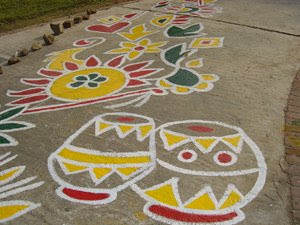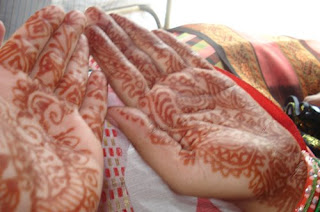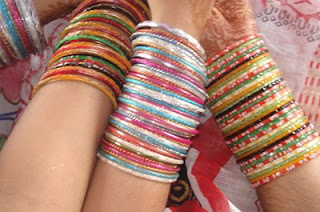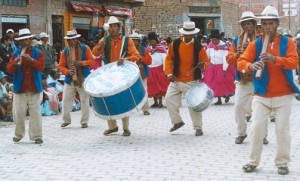The Rising Voices grantees represent many culturally rich communities which are seldom represented in International media. David Sasaki explains in one of his blog post:
How do we form our impressions of other countries when we have never visited them and have never met any of their citizens? The answer for most of us is still television – the images we see on the nightly news and in Hollywood's portrayals. For example:
In the video presentation David said:
If only we would listen to each other more and the media less………….
One of the many ideas exchanged in a meeting of the Rising Voices during Global Voices summit in Budapest was to have a monthly blog carnival amongst the grantees in which all the projects write about the same topic/question. The idea is to learn more about the cultures of different countries from first hand accounts.
We requested articles from different Rising Voices grantees communities. The topic of the first carnival is “What is the biggest celebration in your community each year?”
Many of the grantees are undergoing transformation and some of them are facing infrastructural issues. So participation was limited. I thank all those who participated. I hope we will see more participation in our next carnival.
So here we are, I present to you the first carnival of the Rising Voices where the participants describes about their popular celebrations.
Bangladesh:
The Nari Jibon bloggers in Bangladesh were divided in opinions about the biggest celebration in the community. Nilufa Anne writes about the different festivities of Bangladesh and reminds us that Bangladesh is a secular country, where Muslims, Hindus, Christians and Buddhists live together peacefully although the majority is Muslim(84%):
In turn of six seasons in this beautiful country, Bangladeshis are overwhelmed with various kinds of festive occasions such as Pahela Baishakh (1st day of new Bengali year), Borshaboron (reception of rainy season), Nobanno Utsab (celebration with new crops at Hemonta), Pahela Falgun (1st day of spring), Chaitra Songkranti (last day of Bengali year), International mother language day (Ekushey February), Independence day besides different community’s religious festivals. But I think Pahela Baishakh is the biggest celebration where festive Bangladeshis of various communities hold a devotional reception of Bengali new year.
She posts some great pictures depicting the festivities of Pahela Baishakh.

Face painting with Bangla alphabet

Floor decoration
Aklima Akter Akhy describes:
Pohela Baishakh is the first day of Boishakh month [1st month of Bengali year]. Baishakhi Fairs are held in the different parts of the country. People of all classes go to the fair…People wear colorful dresses representing Bengali trends and exchange gifts. Businessmen open new books of account on this day which is known as Halkhata.

Designed hands with henna
Rabaya Akter also writes about Pahela Baishakh.

Glass bangles in hands
Taslima Akhter opines that the Muslim religious Eid festivities are the biggest celebration of the community. There are two Eid festivals -Eid-ul-fitr and Eid-ul-Azha each year. Eid means sharing happiness with the family, giving gifts to family members . On this day special foods are prepared, the preparation of which may start few days before.
She describes about Eid-ul-Fitr:
In the morning of Eid day I found my mother and sisters preparing different kinds of delicious items of food and sweets. In the afternoon I went to the house of near and dear ones and exchanged greetings with them. At night I watched different programs on TV on different channels.
And about Eid-ul-Azha:
Last year, my father bought a cow and a goat. I fed them. So, I felt sorry when they were sacrificed.
Nargis Sultana comments that Eid means pleasure and writes:
Eid-ul-Azha is quite different from Eid-ul-fitr. After two months and nine days Eid-ul-Azha comes. It is particularly an occasion of sacrifice. Animals are sacrificed by the name of God and the poor get a share of the meat.
Sujan also describes about the Eid festivities and shares photos of the sacrifice.
Sacrifice
Asia Afrin and Jainub Khanum also thinks Eid Festivities are the biggest celebration in the community.
Sonia Yeasmin differs from all. She thinks the victory day on 16th December is the biggest celebration as it is observed all over the country with various programs.
USA:
David Sasaki joins in with the biggest celebration in his country:
My favorite holiday in the United States is the Fourth of July. It commemorates the independence of the United States from the Kingdom of Great Britain.. It also celebrates the world’s oldest consistent democracy. [..]
My favorite part of 4th of July is when we have a BBQ in the afternoon. I must admit that during our BBQ we drink some beer too and we listen to our favorite songs.
After our stomachs are full and we are happy, we walk back to the beach to watch the fireworks.
Some of the best fireworks are over Sea World, a famous park in San Diego which is like a zoo for sea animals.
Bolivia:
In Bolivia carnivals in February are one of the biggest celebrations. Cristina Quisbert writes [es] about the carnival festivities in La Paz and the decorated procession vehicles.
She also describes [es] the carnival in Tarka:







6 comments
oups!
I am currently in Madagascar and will make the Antananarivo bloggers to join the Carnival this sunday. Sorry again Rezwan but Moramora (slowly but surely) is a very very respected expression in Madagascar.
I hope everyone is well at Rising Voices,
Love you guyz
Sonia Yeasmin of Bangladesh is incorrect in depicting Dec 16 as Independence Day of that country. Dec 16 is Victory Day (to commemorate the end of the civil war in 1971 when Pakistani forces surrendered to the Indian army who helped liberate the new state of Bangladesh). Independence Day is observed on March 26.
Thanks Dilkash for the correction.